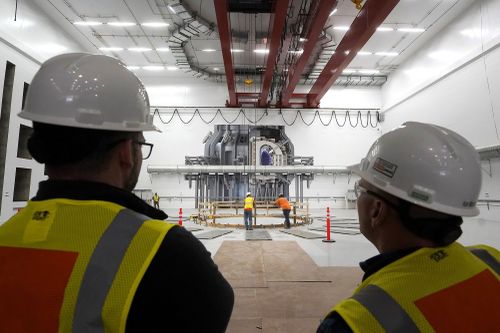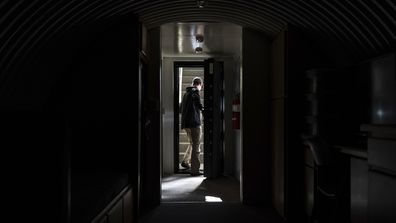CFS, one of the largest and most-hyped nuclear fusion companies, will make a multibillion-dollar investment into building the facility near the state capital, Richmond. When operational, the plant will be able to plug into the grid and produce 400 megawatts, enough to power about 150,000 homes, said its CEO Bob Mumgaard.
“This will mark the first time fusion power will be made available in the world at grid scale,” Mumgaard said.

Virginia Governor Glenn Youngkin welcomed the announcement, calling it “an historic moment for Virginia and the world at large”.
The plant would represent a new stage in the quest to commercialise nuclear fusion, the process which powers the stars. But the path toward it is unlikely to be smooth, not least because the technology has not yet been proved viable.
It involves fusing atoms together to create a powerful burst of energy, achieved using the most abundant element in the universe: hydrogen. The most popular technology uses a donut-shaped machine called a tokamak.
Fusion is near limitless, produces no planet-heating pollution and unlike fission, the nuclear technology the world currently uses, it leaves no legacy of long-term nuclear waste.
But taking it from research projects in labs around the world to commercial use has proved fiendishly difficult. A common joke in the industry is that, for decades, fusion has been just decades away.

It’s something CFS acknowledges.
“Nothing occurs overnight in fusion,” Mumgaard said.
But the startup, which was spun out of MIT in 2018 and has raised more than $US2 billion ($3.18 billion) so far, says it is moving at pace.
It is “deep into” building a tokamak able to demonstrate net fusion energy: meaning a reaction that produces more energy than it consumes. It hopes to produce its first plasma – the superheated cloud of charged gas in which fusion reactions happen – in 2026 and achieve net fusion energy shortly afterward.
Building, owning and operating a power plant to plug fusion power into the grid is its “next act”, Mumgaard said.

The startup looked at more than 100 locations around the world for the power plant before choosing the James River Industrial Centre in Virginia. The site is owned by Dominion Energy, which will lease it to CFS and provide technical assistance. The construction process is set to be long and CFS says it is still seeking permits.
The location was chosen for its growing economy, skilled workforce, clean energy focus and the ability it offered to connect into the grid after the retirement of a coal plant, CFS said.
“In the early 2030s, all eyes will be on the Richmond region … as the birthplace of commercial fusion energy,” Mumgaard said.

Inside a nuclear bunker selling by the thousands
CFS says the Virginia plant is intended to be the first of thousands they plan to put onto the grid in the future.
In general, nuclear fusion startups “tend to be a little aggressive in what they’re promising”, Jerry Navratil, a professor of fusion energy and plasma physics at Columbia University, told CNN last month. There’s a big difference between producing energy from fusion and having a practical system that puts power on the grid and is safe, licensed and operating, he added.
Mumgaard acknowledged “there will be bumps in the road and things won’t change overnight” but, he added, “the designers and planners can now go from a general notion to a specific location for the next chapter in the fusion journey”.







